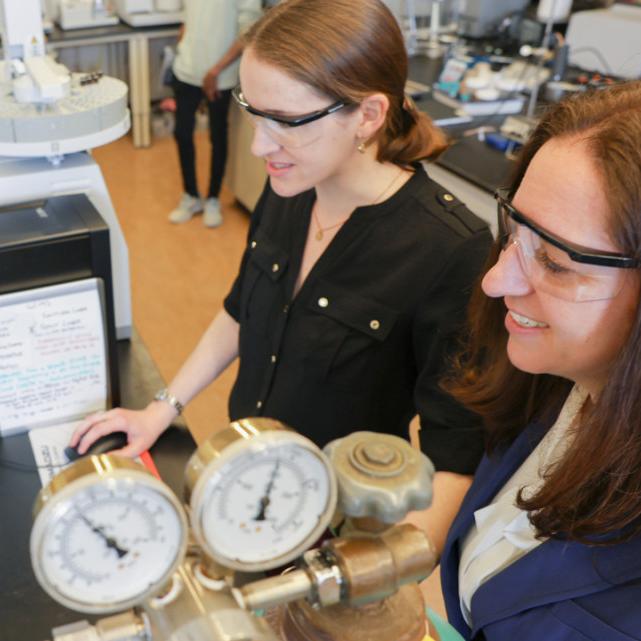Using a novel chemical procedure developed in her lab, Yimon Aye and her group are helping to blaze a trail in the emerging field of precision medicine by targeting and modulating single proteins to achieve desired responses.
The procedure, targetable reactive electrophiles and oxidants – dubbed “T-REX” by the group – involves the use of a photocaged (light-activated) precursor that, when turned on, specifically tags a protein of interest. Exposure to light elicits the desired protein response.
“If you actually want to develop precision medicine, you’ve got to be able to target one protein and record a specific response,” said Aye, the Howard Milstein Fellow and an assistant professor in the Department of Chemistry and Chemical Biology, as well as the Department of Biochemistry at Weill Cornell Medicine.
“A lot of cell-imaging tools are available,” she said, “but imaging only tells you what’s happening, it doesn’t allow you to perturb a specific protein and track down individual pathways with precision control. Now, we can do that.”
Her group reports on its first experimental application of T-REX, involving cultured cells and zebrafish, in “Akt3 is a privileged first responder in isozyme-specific electrophile response,” published online Jan. 23 in Nature Chemical Biology. Postdoctoral researcher Marcus J.C. Long and doctoral student Saba Parvez, both of the Aye Lab, are co-lead authors.
An earlier paper explaining their chemical “toolset,” as Aye calls it, was published Oct. 27, 2016, in Nature Protocols. Parvez and Long were co-lead authors on “T-REX on-demand redox targeting in live cells.”
Chemical redox (reduction-oxidation) signals play an important role in nearly all of life’s essential functions, including injury repair, and gaining understanding of the relationship between the small-molecule signal and the target protein is crucial. But the cellular environment is complicated and these chemical signals can modify many proteins, making it hard to determine the impact of a specific signal on a specific protein.
For this work, Aye’s group chose the molecule 4-hydroxynonenal (HNE), a chemical known as an electrophile that is beneficial to health in low doses but a trigger for cell death in higher concentrations. It is similar in that respect to sulforaphane, which is found in green vegetables like broccoli.
“In the old days, people thought those chemicals were very toxic, and indeed they are harmful under uncontrolled conditions,” Aye said. “But in recent years, the data have shown that these chemicals, in low concentrations, have unique properties to modulate specific proteins that our lab has termed ‘privileged first responders.’”
These responders get modified by HNE at a specific time and location in the cell, events that are important in maintaining cellular physiology. In this case, the gene Akt3 was identified as a sensor of HNE, both in cultured cells and in zebrafish. The fish is a good model to study, as it is a vertebrate and has the ability to regenerate and repair, functions that are dependent on specific cell signaling.
Putting T-REX to practical use was very rewarding for Aye, whose background is in chemistry. She expanded her repertoire to include chemical biology upon her arrival at Cornell in 2012. “This has really paid off in a way that I would have never expected five years ago,” she said.
Other authors included Yi Zhao, postdoctoral researcher in the Aye Lab, and Sheng Zhang, director of Cornell’s Proteomics Facility.
Aye also cited the help of Joe Fetcho, professor of neurobiology and behavior in the College of Arts and Sciences, and Fetcho Lab technician Brian Miller for scientific and technical assistance in the zebrafish work.
This work was supported by grants from the National Institutes of Health, as well as Aye’s 2014 National Science Foundation CAREER Award and her 2016 Sloan Fellowship award.
This story first appeared in the Cornell Chronicle.





